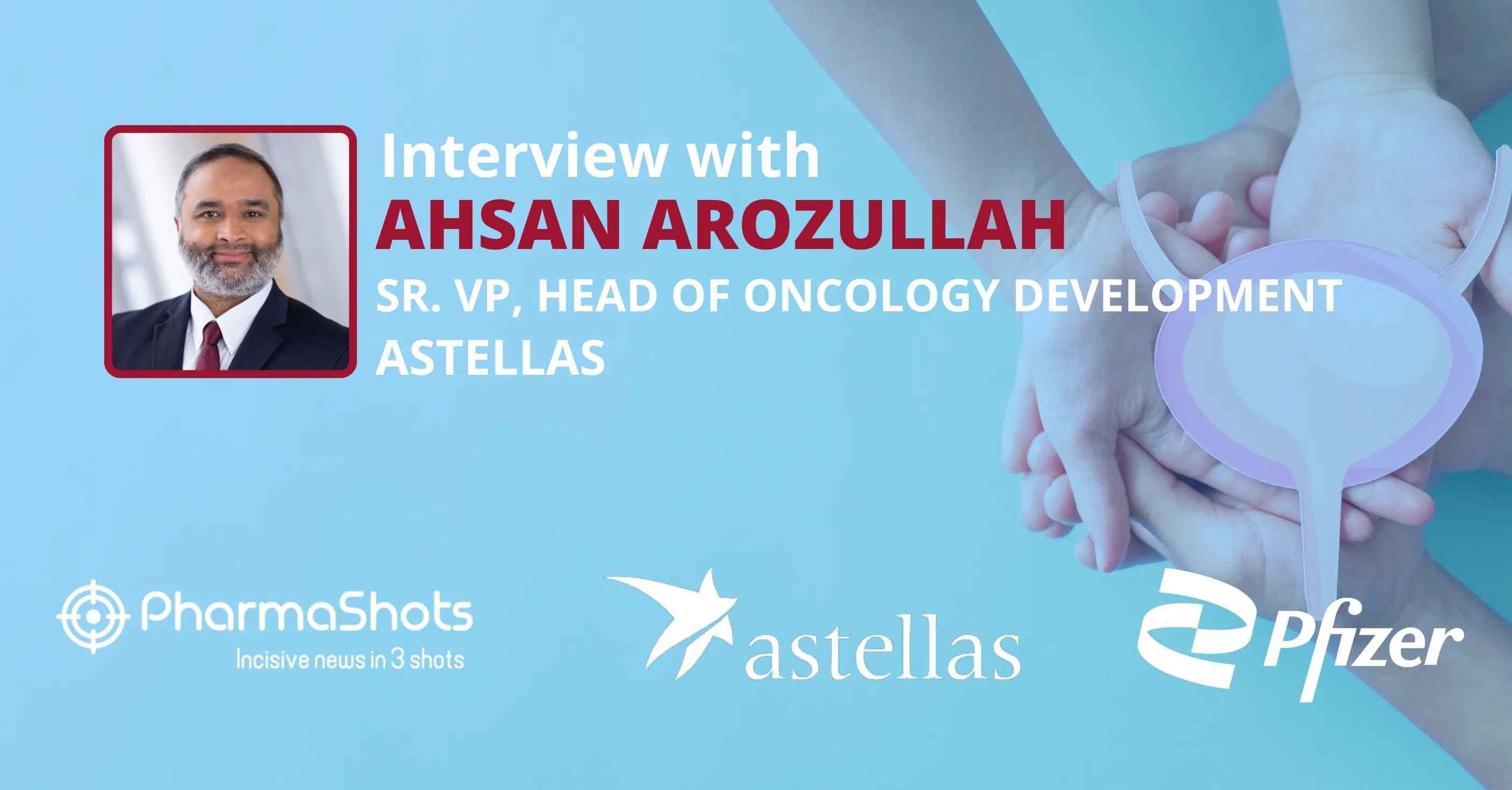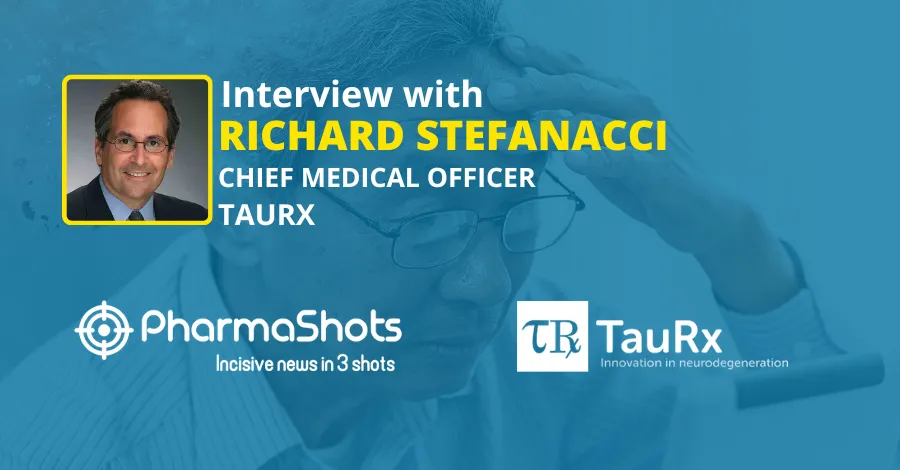
Björn Mellgård shares insights from the Pivotal Phase III data of TAK-755 for congenital thrombotic thrombocytopenic purpura (cTTP)
Shots:
-
Björn Mellgård Vice President and Global Program Lead, TTP Program, Takeda, shares insights from the P-III data of TAK-755 for the treatment of cTTP
-
Björn eloquently shares the highlights of the study design for TAK-755, safety and efficacy outcomes, and goes on to share an update from the P-IIIb continuation trial evaluating TAK-755
-
With a priority review granted for the BLA of TAK-755, Takeda looks forward to hearing a decision from the US FDA by the end of FY2023
Saurabh: Give us some more details (MOA, ROA, formulations, etc) about TAK-755.
Björn: TAK-755 is an enzyme-replacement therapy for the treatment of congenital thrombotic thrombocytopenic purpura, or cTTP, an ultra-rare, chronic, and debilitating disorder caused by ADAMTS13 deficiency. The condition can be life-threatening and results in the formation of clots in the small blood vessels that reduce blood flow and cause widespread organ damage.
The biological role of the ADAMTS13 enzyme is to regulate the platelet binding activity of von Willebrand factor (a protein involved in clotting) by cleaving large multimeric VWF proteins to smaller units and thereby reducing the platelet binding properties of VWF and its propensity to trigger the formation of platelet-rich clots.
TAK-755 provides targeted therapy via intravenous (IV) injection to replace the missing or deficient ADAMTS13 enzyme. It is the first and only recombinant ADAMTS13 protein in development and aims to address a critical gap in care for patients with cTTP, as there are no other medications specifically approved by regulatory authorities for routine prophylactic treatment of the condition.
Saurabh: Highlight the study design of the P-III clinical trial evaluating TAK-755 in patients with Congenital Thrombotic Thrombocytopenic Purpura (cTTP)
Björn: This was a Phase 3, prospective, randomized, controlled, open-label, multicenter, two-period crossover study assessing the safety and efficacy of TAK-755 in the prevention and treatment of acute events of TTP in patients with severe cTTP. Patients enrolled in the study were randomized 1:1 to receive TAK-755 or plasma-based therapy (PBT) for six months and then crossed over to the alternate treatment for six months, and then for all patients to receive TAK-755 treatment for a final six months. Patients could also be enrolled during an acute event, for which they were randomized to receive TAK-755 or PBT. Once the acute event was resolved, patients could continue receiving prophylactic treatment as described above.
Saurabh: What were the key safety and efficacy outcomes obtained from the P-III clinical trial for Congenital Thrombotic Thrombocytopenic Purpura (cTTP)?
Björn: Results of the pre-defined Interim Analysis of the study demonstrate that TAK-755 has a favorable safety and tolerability profile, with a potential safety and tolerability advantage over plasma-based therapies. No patients had an acute TTP event while receiving TAK-755 prophylactic treatment over about 12 months and that the patients receiving TAK-755 prophylaxis experienced fewer episodes of low platelet counts, subacute TTP events and TTP manifestations compared to those receiving plasma-based therapy. A decrease in platelet count is a hallmark of increased disease activity in cTTP.
Additionally, no patients receiving TAK-755 prophylactic treatment experienced treatment-emergent adverse effects, also known as TEAEs, that resulted in interruption or discontinuation of the study versus seven patients receiving plasma-based therapy who had TEAEs that led to interruption, and one that led to study discontinuation.
Saurabh: Would you also share some insights on the study design and the trial outcomes from the P-IIIb continuation trial evaluating TAK-755? How does the data from the P-IIIb continuation trial support the data obtained from the P-III trial?
Björn: The ongoing Phase 3b continuation study enrolled patients with cTTP who had previously completed the pivotal Phase 3 study (rollover cohort) and non-rollover patients who had not received TAK-755 before in the Phase 3 study (new or naïve patients). All patients received TAK-755 prophylaxis weekly or every other week.
The primary outcome of the continuation study was long-term safety/tolerability, as assessed by the incidence of adverse events (AEs) and serious AEs (SAEs). Secondary outcomes included acute and subacute TTP events and non-acute TTP manifestations.
An interim analysis of the Phase 3b continuation study demonstrated a favorable safety and efficacy profile with TAK-755 prophylaxis, fully aligned with and supportive of the data from the 281102 phase 3 study. Importantly, during extended exposure to TAK-755, there was no development of neutralizing antibodies. Once again, no acute TTP events occurred during treatment with TAK-755, and the incidence rates of subacute TTP events and TTP manifestations were comparable to those treated with TAK-755 in the pivotal study.
Saurabh: Elaborate on the added information on TAK-755 provided by Takeda at the ISTH 2023. How will this presentation help in the future commercialization of TAK-755?
Björn: We were pleased to share the data from our pivotal Phase 3 trial and the interim analysis of the Phase 3b continuation study at ISTH 2023 and help contribute to the scientific discussion for those affected by cTTP. TAK-755 is the first and only investigational treatment that directly addresses ADAMTS13 deficiency, the underlying cause of cTTP.
There is a clear, unmet need for targeted replacement to address the ADAMTS13 deficiency for those with cTTP, as they face life-threatening events and a high long-term risk for debilitating symptoms and currently lack any approved treatments. The results presented at ISTH 2023 are encouraging and demonstrate that TAK-755 could be a safe and effective option for this patient group.
In summary, the phase 3 studies show that the exposure to ADAMTS13 in about 5 times higher with TAK-755 as compared to PBT. This provides an explanation for the improvement in thrombocytopenia events and other symptoms as well as the fact that no acute events have so far been observed during prophylactic treatment with TAK-755. In addition, the favorable safety and tolerability of TAK-755 in combination with the convenience associated with the infusion of a small volume (usually 10-15 ml) as compared to 600-1000 ml for PBT, makes TAK-755 a very promising investigational therapy for patients living with cTTP
Saurabh: As you are heading towards the end of the P-III clinical study, what plans do you have in mind for registering TAK-755 for approval?
Björn: In May 2023, the U.S. Food & Drug Administration (FDA) accepted and granted Priority Review for Takeda’s Biologics License Application (BLA) seeking approval of TAK-755 for the treatment of cTTP. We anticipate receiving the FDA’s decision before the end of FY2023. We have also received acceptance for the MAA submitted to the European Medicines Agency in April. Additional regulatory filings are currently under evaluation.
Saurabh: As Congenital Thrombotic Thrombocytopenic Purpura is a rare disorder, are there any plans to provide patient support programs or other programs for spreading awareness among these patients?
Björn: Patients are at the heart of everything we do and at Takeda we aspire to transform the treatment of rare diseases. Education and awareness are just two of the ways we aim to have a positive impact on this community; at this time, I cannot share specifics regarding any support programs, as TAK-755 is still an investigational treatment and is yet to be approved by regulatory agencies in any market. Our focus remains on advancing this innovative treatment for people living with cTTP.
Image Source: Canva
About the Author

Björn Mellgård
Björn Mellgård received his MD and basic science training at Karolinska Institute where he also received his PhD degree in Molecular Immunology. He transitioned from academia to Pharmaceutical industry in 1992, when joining Astra (later AstraZeneca). After initial 9 year in preclinical research and leading several programs in the Gastrointestinal area, Björn joined the Translational Medicine function and ultimately led a team of about 80 PhD and MD staff in cardiovascular, neuroscience, gastrointestinal and respiratory areas. In 2006 Björn moved to Shanghai China for a two-year assignment with responsibilities for externalisation activities for all AstraZeneca Discovery areas, except Oncology, reporting into AZ Global Discovery Leadership. After this, Björn was in 2009 recruited to Novartis (Basel, Switzerland) as the Global Head of Translational Medicine Gastroenterology. After successfully building the GI translational medicine capabilities and delivering several Proof of Concepts as well as contributing to the early research pipeline, he moved on to join Shire in 2012. Within the Shire Clinical organization. Björn held the position as Global Development Lead for the Gaucher and Fabry programs and in 2017 he transitioned from Switzerland to Cambridge (US) and with this he took up the leadership of the programs in von Willebrand Disease (VWD) and in Thrombotic Thrombocytopenic Purpura (TTP). Under Björn´s leadership, the VWD program successfully filed and received global approvals for on-demand, surgery and prophylaxis indications and the TTP program recently filed in US and EU for the first indication in congenital TTP.
The VWD program was successfully transitioned to the commercial organization in 2022 and Björn is currently holding the position as VP and Global Program Lead for the TTP program within the Rare Disease Area, leading cross-functional teams with senior functional representatives from preclinical, clinical, and manufacturing/supply and commercial functions.
Related Post: Sujay Jadhav converses about VeraSite, a recently launched subscription-based tool for clinical trial site selection
Tags

Saurabh is a Senior Content Writer at PharmaShots. He is a voracious reader and follows the recent trends and innovations of life science companies diligently. His work at PharmaShots involves writing articles, editing content, and proofreading drafts. He has a knack for writing content that covers the Biotech, MedTech, Pharmaceutical, and Healthcare sectors.













